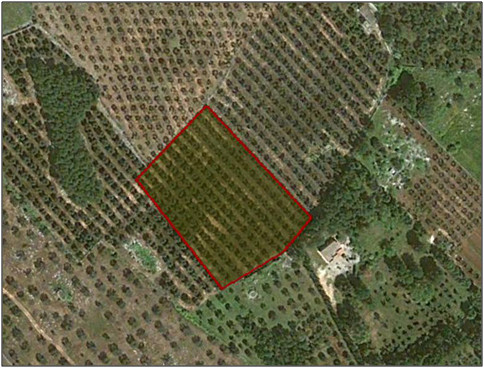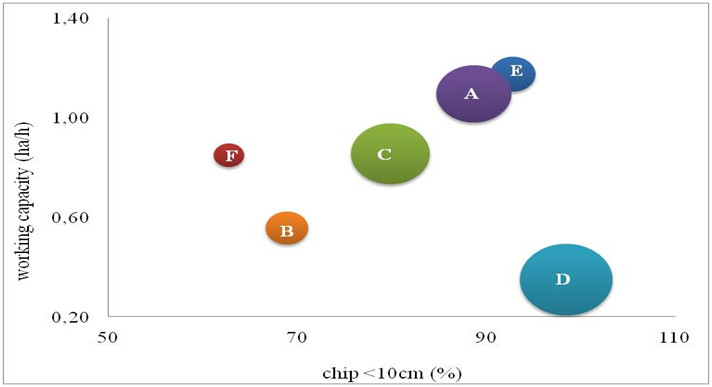Large quantities of ligneous biomass can be obtained from pruning operations carried out in Mediterranean fruit plantations. At present, these residues are usually destroyed by in-field burning, or by crushing and burying the woody material into the ground. According the available literature, the largest part of the biomass produced in fruit plantations is not utilized for bioenergy production. However, in recent years, the waste to energy research increased, and more attention was given to the use of pruning residues as possible source of energy. Indeed, recent studies confirmed that agricultural residues may represent a good source of biomass for this purpose. To increase the knowledge on the pruning residues exploitation, it is recognized the need to go further in the research by studying how the commercial available machines would be suitable for collecting olive pruning residues, analyzing also the machine-capacity to produce a chipped material fit for energetic purposes.
Other aims of this study are also those to assist the promotion of the bioenergy sector, and implementing data for logistics studies.
 The work took place in a farm located in Castrigliano de’ Greci (Le) (40°10′32′′ North, 18°19′11,23′′ East). It consisted in an experimental tests made for testing six commercial shredded machines in an olive grove of 0,45 ha (see table below). These machines represent the main solutions currently available in the Italian trade for harvesting pruning.
The work took place in a farm located in Castrigliano de’ Greci (Le) (40°10′32′′ North, 18°19′11,23′′ East). It consisted in an experimental tests made for testing six commercial shredded machines in an olive grove of 0,45 ha (see table below). These machines represent the main solutions currently available in the Italian trade for harvesting pruning.
The preliminary phase has concerned the monitoring of the agricultural areas designated for harvesting pruning tests. The pruning was obtained from the olive grove by usual annual tree maintenance.
Residues were windrowed in two rows along the inter-rows of the plantation. Three theses were planned in the experimental design of the work for testing height modification of the machine’s pick-up system at three different distances from the ground.
|
|
Machinery |
Width (mm) |
Length (mm) |
Height (mm) |
Volume (m3) |
|
A |
Futura 160 |
1.750 |
3.300 |
1.700 |
1,7 |
|
B |
TSB 1900 |
2.080 |
1.900 |
1.600 |
2,8 |
|
C |
Trp-CV 145 |
1.900 |
1.400 |
3.400 |
/ |
|
D |
TR-RAC |
2.250 |
1.800 |
1.350 |
1,8 |
|
E |
Comby |
2.230 |
4.870 |
2.000 |
5 |
|
F |
Picker Kargo 200 |
2.300 |
5.300 |
1.960 |
8,3 |
In the development of the thesis A, each machine was regulated considering the optimal distance between pickup and soil as suggested by the manufacturer. In thesis B, the pickup of each machine were regulated at the minimum distance from the ground (1 cm). In thesis C, all pick up were put at the maximum distance from the ground (3 cm). This method has been used to evaluate the typology of chipped produced by different machines, and the presence of impurities in function of the distances between the pickup and the ground.
The machines performance has been evaluated only for thesis A. It was done by measuring the times taken by each machine to collect the residues, as established in the official methods of the “Commission Internationale de l’Organisation Scientifique du Travail en Agriculture” (C.I.O.S.T.A.), and the Italian Society of Agricultural Engineering (A.I.I.A.) 3A R1. Collection-losses were estimated in each thesis and for each machine (Figure II).
Characterization of the chipped material
The ash content analysis was done for all theses. It was made in laboratory by taking from each machine three samples of 1,5 kg of chipped material. Only for thesis A, another sample of chipped sized 5kg was taken from each of the 6 machines and brought to the Panacea laboratory for further studies. Each sample has been weighed and the composing material was divided in three dimensional classes (< 5cm, among 5 cm and 10 cm, > 10cm). Thereafter, the material of each class was furtherly weighed for defining the percentage of incidence that each class had on the total weight of the sample.
The machines tested had a working capacity ranging from 0,35 ha h-1 to 1,17 ha h-1. The model without tillage has shown the highest performance due to the absence of stops made for unloading the product and for the highest capacity of trailers. Considering the total quantity of biomass that each machine could theoretically harvest (1.060 Kg), there were registered collection losses ranging from 0,6 and 5,42% (table below).
|
|
A |
B |
C |
D |
E |
F |
|
Losses (Kg) |
37,4 |
12 |
42 |
57,5 |
14 |
6,4 |
|
Losses (%) |
3,53 |
1,1 |
3,9 |
5,4 |
1,3 |
0,6 |
The study found the average chip length to be about 100 mm. For some shredders, the percentage of material below 10 cm of length was higher than 88%. Respectively, for some of them it was registered the 98,5%, the 92,8%, and the 88,7% (table below).
|
|
A |
B |
C |
D |
E |
F |
|
< 5 cm |
60,1 |
24,3 |
37,8 |
77,5 |
42,9 |
19,8 |
|
5-10 cm |
28,6 |
44,7 |
42,1 |
21,0 |
49,9 |
43,1 |
|
> 10 cm |
11,3 |
31,1 |
20,1 |
1,5 |
7,2 |
37,2 |
Raising from 10 to 30 mm the grinder’s pick-up from the ground, it was observed a reduction of the ash content between 23,53% and 54,46%, corresponding to 0,8 m3ha-1 and a maximum of 2,71 m3ha-1 of ash, depending to the machine used.
The following figure shows the comparison of the working capacity of each machine with the percentage of suitable chips produced (≤10 cm) and the harvesting losses registered. (The bubble shows the entity of the harvesting losses of each machine). As notable in the graph, some machine achieved a production of chips ≤10 cm of almost 100%, but displaying higher harvesting losses. Others have shown a production of chips suitable for burning equal to 70%, but with lower harvesting losses.

Numerous studies have demonstrated that it is possible to recover and utilize pruning for the production of energy, ensuring economic and environmental sustainability of the supply chain. Using appropriate systems, the collection of pruning could be simplified and the material produced could be consistent, homogenous and ready for burning in boilers. An inappropriate harvesting would lead also to an increase of inert materials in the harvested biomass, which would increase the percentage of ash produced after burning. Consequently, it would determine high costs for disposal and for the boiler maintenance.
During the experimentations we have observed that raising the height of the pick-up system of few cm from the ground has determined a lower content of ash in the chips produced. On the contrary, there were registered higher harvesting losses. From the cultivation present in Italy could be obtainable very large quantities of biomass suitable for industrial purposes. Many tests led to demonstrate that recovering pruning residues would be possible ensuring also environmental and economic sustainability in the wood-energy chain. This objective would be achievable just adopting adequate harvesting systems. The 6 forage-loader tested have demonstrated good capabilities in collecting olive pruning residues, producing chips of good quality (humidity and dimension), being in compliance with role UNI CEN/TS 14961: 2010 as well.
From the results obtained, analyzing the work made by all machines, it can be stressed that choosing a forage loader over the other depends by the purpose of the agricultural entrepreneur and by the business reality of the farm.
For instance, some of the machine tested displayed a good working capacity, with low harvesting losses, but with a low production of chips ≤10cm. The Use of these types of machine is suggested to those farms whose purpose is the removal of residues only. Vice versa, the use of machines that achieved a production of almost 100% of chips suitable for burning in boilers (≤10 cm) can be suggested to those farms whose aim is the production of material for energetic chain.